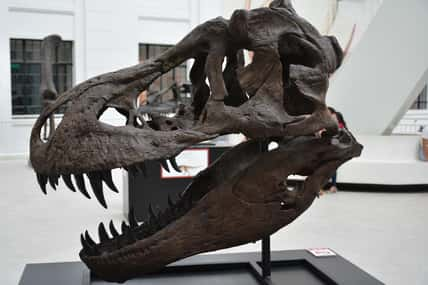A Meteorite Changed Life On Earth After Hitting Scotland A Billion Years Ago

One billion years ago, a meteorite struck northwest Scotland, hitting the region 200 million years later than previously thought.
The impact aligns with some of the earliest known land-based microbial fossils and reveals how meteorite strikes may have influenced Earth’s environment and the development of life.
In northwest Scotland, the Torridonian rocks are considered to be historical treasures of the ancient lakes and river systems that existed a billion years ago.
The bodies of water were home to microbial ecosystems made up of eukaryotes, which are single-celled organisms that are the ancestors of all animals and plants.
The Torridonian environments and microbial ecosystems were disrupted when a meteor struck the planet. The event has been preserved in the form of the Stac Fada Member, a geological unit comprised of strange layers of rock fragments that were broken and melted by the strike.
There are also minerals that look extremely similar to those found in famous impact sites like Chicxulub in Mexico and Sudbury in Canada.
The minerals at Stac Fada were buried in flows of smashed rock and were released by the impact. They then spread across the ancient landscape.
Researchers have recently discovered that the date for the Stac Fada impact overlaps in age with microfossils in the Torridonian rocks. It’s not easy to determine when a meteorite came crashing onto Earth.
Minerals are used to narrow down the age ranges, but they can’t have been overly altered by the heat, pressure, and fluids from the impact.

Sign up for Chip Chick’s newsletter and get stories like this delivered to your inbox.
At the same time, they must be strong enough to survive the passage of time. It is rare to find minerals that fit the bill, but luckily, a few were detected in the Stac Fada rocks.
One of them was called reidite, which only forms under extreme pressure. The other was granular zircon, a uranium-bearing mineral that forms by high temperatures from an impact.
They pointed to a meteor strike that occurred one billion years ago, not 1.2 billion years ago, as previously believed.
The new age shows that the timing of the impact aligns with early non-marine eukaryotic fossils. It also coincides with a major mountain-building event. So, Torridonian life forms had to deal with significant changes in their environment.
The immediate aftermath of a meteorite strike may be devastating, but the latest findings demonstrate that the long-term effects could support crucial biological processes.
Meteorite strikes break down rocks, create hydrothermal systems, and form crater lakes that allow important ingredients for life to accumulate, such as clays, phosphorous, and organic molecules. Meteorite collisions did not just scar the surface of the Earth—they also paved the way for the planet’s future.
The details of the new study were published in the journal Geology.












